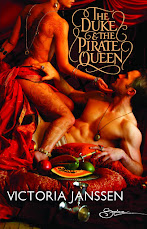
I had planned to have several different angles to the story. First, it was to be a historical, set during the Crimean War, in which the hero would be participating. Second, there was to be time travel, a traveler from the far future to the 1850s. Third, I'd decided the time traveler was herself from the past, but had been brought to the future. And fourth, there had to be a romance.
You can see where the trouble lies. It's just too much for a short story, even one with a length of 6,000 - 10,000 words. To establish the heroine's backstory would require additional space; comparing it to the other elements, I decided it was unnecessary. Out it went. The time travel aspect itself, in my first version, required considerable setup. I needed wordcount to explain who the heroine was, what her world was like, why she was doing what she was doing, and why the reader should care about her and her actions. All that before the story truly began.

I abandoned that entire approach, and decided the time travel element would be as mysterious to the reader as to the point of view character. That way, I'd be sure to include only information the reader needed to know to follow the main idea of the story: that a time traveler falls in love with someone in the past. It gave me more space to concentrate on the development of the characters and their relationship.
The other important thing I learned is that an entire courtship is difficult to condense. There needs to be enough there for the reader to become emotionally involved despite the limited wordcount. One approach is to show only part of their relationship, for instance their initial meeting, or their reunion after a long separation. The other key points along their personal relationship timeline can then be dropped in with hints or references. The approach I took was to condense their relationship using pressure. They don't know each other for very much time at all, but the time they do spend together is very intense, and in the midst of a dangerous situation. Months pass between the times they meet, but I condense the time they are not together, making sure they are together in the beginning, middle, and end of the story.
I'm still not sure I'm satisfied with the pacing I chose. But it was a valuable experiment.




That's a lot of story for 7K! Sounds like you made smart choices about the storyline.
ReplyDeleteI'm actually trying to write a time-twister as we speak (not quite travel) from present day into 1900s and fit it into a length of about 20K. In mine, years pass between the times they meet. Struggling a bit with fleshing out the hero's character. Not because of space, but just can't seem to plan out extra scenes and keep the place flowing in that short of a piece -- plus get the 1900s details in and get an HEA.
This was a really helpful post for me! Do you think we're sharing the same psychic vibes?
That's a lot of story for 7K!
ReplyDeleteYeah...not sure if it worked or not, but it was due. And I always learn a lot from trying different things, so I gain that even if the story doesn't quite work.
20K sounds like a more useful link for this sort of thing (there's a reason novellas/novelettes work so well for speculative fiction). Maybe for the hero, you could make him sort of like pemmican - all the water sucked out of his dialogue, his physical actions, his possessions, even his appearance, so nothing's left but the nutritious bits. And maybe details that are suggestive to the reader, even if they're not explicit (I don't mean erotically, though that could also apply).
Pemmican. I'm not sure why that popped into my head.